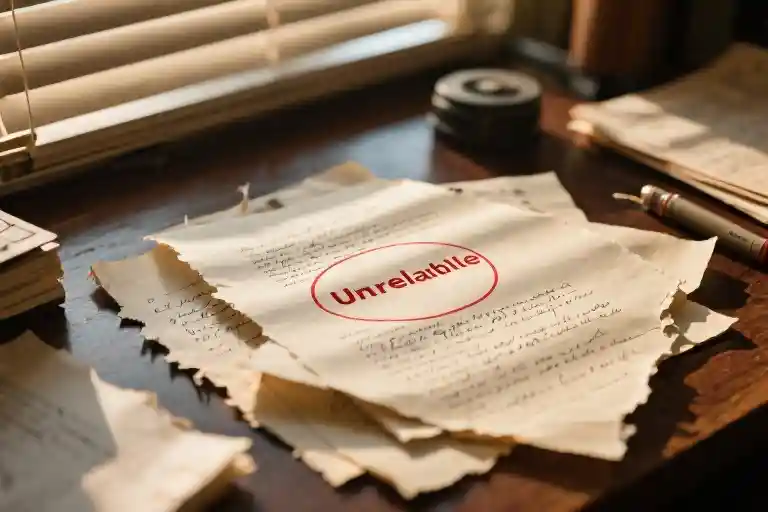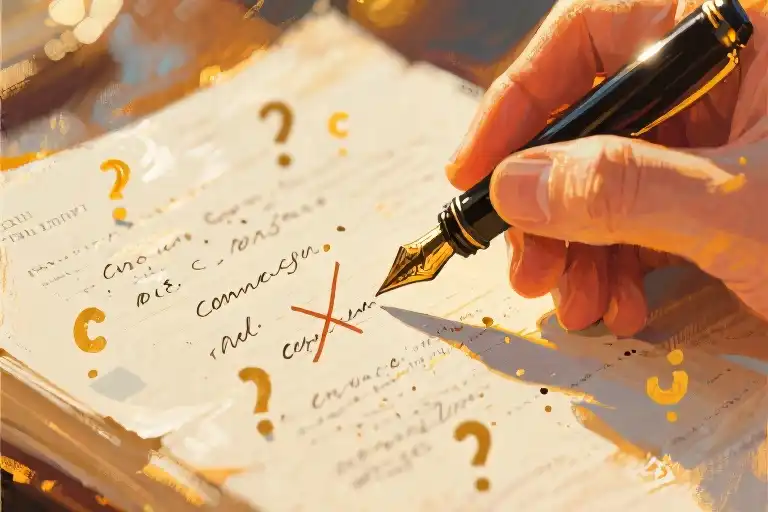The first draft of your story likely contains more dialogue than it needs. Those initial lines your characters speak? They’re rarely their best—or yours. But this isn’t a failure; it’s part of the process. Early dialogue serves as scaffolding, helping you understand the scene’s rhythm and your characters’ voices before you refine it into something sharper.
Consider the famous scene from The Color of Money where Carmen, wearing only a robe, lets it slip open while facing Eddie. The moment crackles with tension, yet neither character states their intentions directly. In a weaker version, the exchange might have played out with on-the-nose dialogue:
CARMEN
Make the call. Try me.
EDDIE
No, I will raise.
CARMEN
I am not folding.
EDDIE
I call your bluff.Instead, the film shows us everything through action—the deliberate loosening of the robe, Eddie’s reaction, the unspoken power dynamic. This approach demonstrates a fundamental principle of visual storytelling: what characters do often reveals more than what they say.
Three key insights emerge from this example:
- Dialogue frequently explains what should be shown
- Actions create visual interest where words might fall flat
- Physical choices can convey complex relationships instantly
Most writers discover their scenes through dialogue first—it’s how we naturally imagine interactions. The magic happens in revision, when we step back to ask: Could this moment work better without words? Sometimes the answer is yes, sometimes no. The skill lies in knowing the difference.
As we explore this further, we’ll examine how to diagnose dialogue overload, when action serves the story better, and techniques for converting talk into compelling visual moments. The goal isn’t to eliminate conversation entirely, but to develop the discernment that separates functional dialogue from transformative storytelling.
The Pathology of Dialogue Dependence
Every writer knows that first-draft dialogue rarely sparkles. Those initial exchanges between characters often serve as placeholders—verbal scaffolding that helps us map out relationships and conflicts. But left unedited, they can become what screenwriters call ‘on-the-nose dialogue’: exchanges that state intentions and emotions with all the subtlety of a bullhorn.
Symptom 1: Explanatory Dialogue (The ‘As You Know’ Syndrome)
This occurs when characters tell each other things they already know purely for the reader’s benefit. You’ll recognize it by that creeping sense of artificiality:
“As you know, Professor, our quantum destabilizer runs on plutonium-239, which is why we can’t let it fall into enemy hands.”
Self-test: Highlight any dialogue where:
- Characters explain their own motives (“I’m doing this because…”)
- Historical/technical information gets dumped in conversation
- Two experts discuss basic aspects of their shared profession
Treatment: Convert explanations into:
- Environmental details (e.g., a framed plutonium-handling certificate on the lab wall)
- Character business (the professor adjusting her radiation badge)
- Narrative summary (a single line about ‘routine safety checks’)
Symptom 2: Emotional Declarations (The ‘I Feel’ Trap)
Novice writers often have characters verbalize emotions directly:
“I’m so angry at you right now!”
“That comment hurt my feelings.”
Real humans rarely articulate emotions this way—we reveal them through:
- Physical reactions (white-knuckling a glass)
- Action choices (slamming a door vs. carefully closing it)
- Subtextual dialogue (“Nice. Real nice.” with a frozen smile)
Case Study: In The Godfather, when Michael Corleone says “It’s not personal, it’s strictly business,” the chilling effect comes from his calm demeanor while arranging a murder.
Symptom 3: Mechanical Response Chains
Dialogue becomes ping-pong when every line directly responds to the previous one without subtext or environmental interaction:
“Pass the salt.”
“Here you go.”
“Thanks.”
“You’re welcome.”
Healthy alternative: Break the pattern with:
- Action beats (a character pushing the salt shaker away after receiving it)
- Non-sequiturs (“These eggs need more pepper too”)
- Environmental interruptions (a phone ringing mid-exchange)
Pro Tip: Record yourself having a casual conversation—notice how often real dialogue includes interruptions, distractions, and unfinished thoughts. That messy rhythm creates authenticity.
The Silent Treatment
When diagnosing your manuscript, try this radical experiment: Delete all dialogue from a scene and rewrite it using only:
- Character actions
- Environmental details
- Internal monologue (if using close POV)
You’ll often find the scene becomes more cinematic and revealing. Later, reintroduce only the dialogue that adds value beyond what the visuals convey. This isn’t about eliminating conversation—it’s about making every spoken word earn its place on the page.
The Three Tiers of Action Writing
Most writers stumble into dialogue like it’s a comfortable old couch – familiar, easy, sink-right-in. But that first draft chatter often does more harm than good. The solution isn’t better dialogue (though that helps), but understanding how physical movement can become your most potent storytelling tool.
Foundational Layer: The Five Elements of Physical Action
- Specificity beats generality – ‘She picked up the glass’ becomes ‘Her fingers traced the condensation before gripping the tumbler’. Notice how the second version tells us about the temperature, her carefulness, and creates tactile imagery.
- Speed as characterization – A character who ‘snatches’ versus one who ‘unfolds their hand slowly toward’ reveals volumes about personality before any dialogue intervenes. The Godfather’s opening scene demonstrates this perfectly – Don Corleone’s deliberate movements contrast with petitioners’ nervous gestures.
- Incomplete actions – People rarely complete tasks smoothly. Showing a character starting to reach then stopping, or misjudging a handoff, creates realism. Watch any James Dean performance for masterclasses in interrupted motion.
- Dominance displays – Spatial relationships convey power dynamics without exposition. Standing over someone, examining objects without permission, or controlling access to space (blocking doorways) shows hierarchy. Mad Men’s Don Draper weaponizes this constantly.
- Micro-expressions first – Before writing grand gestures, nail the tiny tells: nostrils flaring before full anger, pinky finger twitching during lies. These create buildup and allow readers to ‘discover’ emotions rather than being told.
Intermediate Tier: Environmental Interaction
Your setting shouldn’t be wallpaper. Characters reveal themselves through how they engage with their surroundings:
- Objects as extensions – A lawyer straightening picture frames during tense negotiations (control issues). A chef wiping already-clean counters (avoidance). The objects characters fuss with become psychological mirrors.
- Territory marking – How people claim space speaks loudly. Walter White’s transformation in Breaking Bad shows in his changing posture within the same car – from squeezed passenger to sprawling driver.
- Weather response – Does your character stride through rain or hunch against it? Notice how Game of Thrones uses characters’ reactions to winter to show resilience or weakness.
Master Level: Metaphorical Action
This is where physicality transcends literality:
- Symbolic repetition – In Chinatown, Jake Gittes constantly adjusting his hat represents his futile attempts to maintain dignity. Find one distinctive action that embodies your character’s struggle.
- Contradictory behavior – A character smiling while white-knuckling a chair reveals more than any ‘I’m fine’ dialogue ever could. The best movie villains excel at this – calm actions belying violent intent.
- Cultural coding – Certain actions carry subconscious meaning. Tucking hair behind ears signals vulnerability across cultures. Research anthropological studies on universal gestures.
Remember: Great action writing isn’t about choreographing movement, but curating behavior that makes readers lean forward, filling silence with meaning. Start by cutting three dialogue exchanges in your current draft and replacing them with silent power struggles – you’ll feel the difference immediately.
The Iceberg Principle in Literature
Hemingway’s famous iceberg theory—where only 20% of meaning floats above the surface—becomes particularly potent when applied to action writing. In The Old Man and the Sea, Santiago’s bleeding hands tell us more about his determination than any monologue about perseverance ever could. The saltwater stinging his wounds becomes the story’s emotional compass, guiding readers deeper than explanatory dialogue ever could.
Contemporary writers often mistake this technique for simple minimalism. But the magic lies not in writing less, but in writing loaded actions—gestures that pull double duty. When a character polishes their glasses three times during an argument, we’re seeing nervousness, obsessive tendencies, and a stalling tactic all in one motion. These are the moments where physicality transcends stage direction and becomes characterization.
Cinematic Silence: When Frames Speak Louder
Film provides the ultimate masterclass in visual substitution. Take No Country for Old Men‘s coin toss scene—Chigurh never explains his philosophy of fate. The squeak of the faucet, the nervous glance at the door, the way he makes the shopkeeper call the coin… these actions build unbearable tension while revealing everything about both characters. Screenwriters call this ‘writing to the eyes’—constructing scenes that would still make sense with the sound off.
This translates directly to prose. Instead of writing:
“I don’t trust you,” she said, eyeing him suspiciously.
Try:
Her fingers lingered on the knife block as he reached for the sugar.
The second version does everything the first does, plus establishes setting, implies domestic intimacy, and creates spatial tension—all without a single adverb.
Player Agency as Narrative Engine
Video games like What Remains of Edith Finch revolutionize action writing by making environmental interaction mandatory. When a character’s grief manifests through the ritual of cleaning fish—with the player forced to perform each repetitive motion—the gameplay is the characterization. This interactivity raises the stakes for writers: every action must simultaneously advance plot, reveal character, and justify player engagement.
Traditional writers can steal this technique by treating settings as active participants. A detective doesn’t just notice the messy desk—she traces the coffee ring stains with her pinky while the suspect talks. The office becomes a silent interrogator, its stains more accusatory than any direct question could be.
What unites these approaches across mediums isn’t just the preference for showing over telling, but the understanding that well-chosen actions create interpretive space—that fertile gap between what happens and what it means where readers willingly lose themselves. The best visual storytelling doesn’t just replace dialogue; it makes us lean forward to catch whispers in the space between movements.
The Writer’s Toolkit: From Dialogue to Action
Every writer knows the temptation – those first drafts where characters won’t stop talking. The pages fill with quotation marks, and somewhere around page thirty, you realize everyone’s just explaining their feelings. This isn’t writing; it’s transcription. The real magic happens when we replace explanatory dialogue with meaningful action.
The Dialogue Conversion Checklist
Before attacking your manuscript with the delete key, use this diagnostic tool to identify salvageable moments:
- The Explanation Test
Highlight any dialogue where characters:
- Describe their own emotions (“I’m so angry right now”)
- Explain backstory (“As you know, Doctor, my father…”)
- Repeat information already shown through action
- The Silence Experiment
Delete one full page of dialogue. Does the scene still work? Better yet, does it gain tension? The scenes that survive this cut often become your strongest sequences. - The Poker Face Rule
If characters could be playing high-stakes poker during the exchange, the dialogue needs work. Great scenes reveal what’s beneath the surface, not what’s being said across the table.
Scene Rewrite Blueprint
Take this problematic exchange from a beginner’s script:
“I can’t believe you’d betray me like this,” Sarah shouted. “After everything we’ve been through!”
“You never understood me,” Mark replied, turning away.
Now apply the action filter:
- Locate the emotional core: Betrayal, failed connection
- Identify environmental props: Sarah’s shaking hands, Mark’s half-packed suitcase
- Substitute one line with action:
- Original: “You never understood me”
- Revision: Mark zips the suitcase shut, the sound drowning out Sarah’s next words.
The rewritten version creates visual tension while preserving subtext – we understand their relationship’s collapse through what’s left unsaid.
Five Films That Master Visual Storytelling
Study these scenes where actions speak louder than words:
- The Godfather (1972)
Michael Corleone’s restaurant hit – the tension builds through shifting eye contact and a trembling hand, not threats. - There Will Be Blood (2007)
The infamous milkshake scene demonstrates how mundane actions can become terrifying power plays. - Lost in Translation (2003)
Bob’s whispered line to Charlotte remains unheard, making their connection more poignant. - No Country for Old Men (2007)
Anton Chigurh’s coin toss scenes create unbearable tension through simple gestures. - Wall-E (2008)
The first thirty minutes prove entire relationships can be built without dialogue.
Keep these playing while you write – not for distraction, but as a reminder that the human experience communicates through movement, hesitation, and silent choices far more than declarations. Your characters will thank you for shutting them up occasionally.
The 24-Hour Dialogue Fast
Here’s a challenge that will terrify most writers: For your next three scenes, don’t write any dialogue at all. Not a single “he said” or “she whispered.” Let actions carry the entire emotional weight. You’ll discover how much your characters can communicate through:
- The way they handle objects (slamming a door vs. gently closing it)
- Their physical reactions (clenched jaw vs. relaxed shoulders)
- How they occupy space (leaning in vs. backing away)
This exercise forces you to develop visual storytelling muscles. Many writers report breakthrough moments during this constraint – suddenly noticing how a coffee cup trembling in a character’s hand can reveal more than five lines of anxious dialogue.
Creator’s Self-Check Questionnaire
Before submitting your work, run it through these filters:
- The Mute Test: Cover all dialogue with your hand. Can you still follow the emotional arc?
- The Foreign Film Test: If this scene were in a language you don’t speak, would the tension translate?
- The Page Flip Test: When skimming quickly, do white spaces between dialogue dominate, or do action paragraphs create rhythm?
Red flags appear when you answer “no” to any of these. The solutions usually involve:
- Replacing explanatory dialogue with environmental interaction (having a character angrily rearrange bookshelves instead of saying “I’m furious”)
- Converting verbal conflicts into physical standoffs (two characters silently competing over thermostat control)
- Externalizing internal debates (showing a character’s hesitation through repeated glances at a clock)
Your Turn: Submit for Surgery
We’re opening the clinic doors. Share one dialogue-heavy scene you’re struggling with (max 300 words), and we’ll perform live “show don’t tell” transplants. Include:
- The emotional beat you’re trying to convey
- Why you initially chose dialogue
- What isn’t working
The best submissions will get detailed rewrite markups demonstrating how to:
- Identify the core conflict
- Map it to physical manifestations
- Weave in environmental elements
- Maintain subtextual tension
This isn’t about eliminating dialogue entirely – it’s about making every spoken word count by surrounding it with purposeful action. The difference between characters talking about power dynamics versus demonstrating them through a shared cigarette (lighting it, refusing it, stealing the last drag) is the difference between writing and storytelling.





